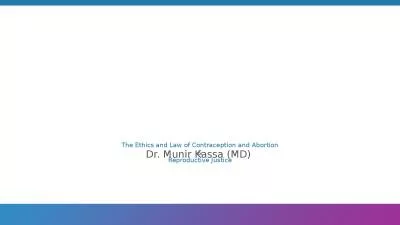PDF-The central court decision that created current abortion law in the U
Author : audrey | Published Date : 2021-07-04
saline injection required a married woman to abortion could be performed on their minor daughtwithout explanation the need for informed consent The Court held that
Presentation Embed Code
Download Presentation
Download Presentation The PPT/PDF document "The central court decision that created ..." is the property of its rightful owner. Permission is granted to download and print the materials on this website for personal, non-commercial use only, and to display it on your personal computer provided you do not modify the materials and that you retain all copyright notices contained in the materials. By downloading content from our website, you accept the terms of this agreement.
The central court decision that created current abortion law in the U: Transcript
Download Rules Of Document
"The central court decision that created current abortion law in the U"The content belongs to its owner. You may download and print it for personal use, without modification, and keep all copyright notices. By downloading, you agree to these terms.
Related Documents














